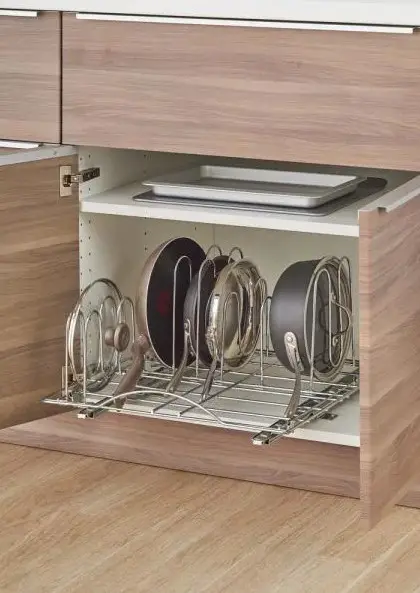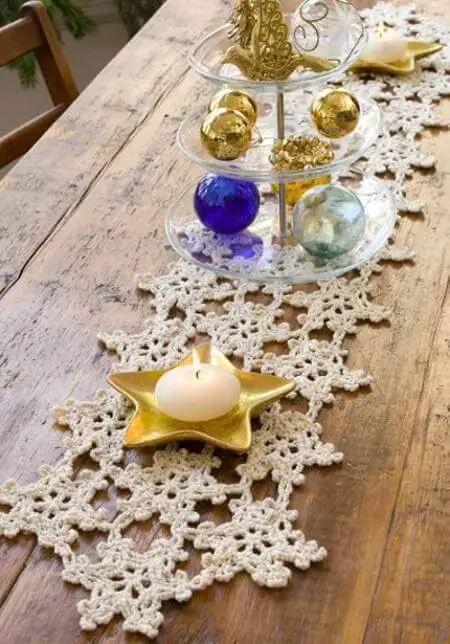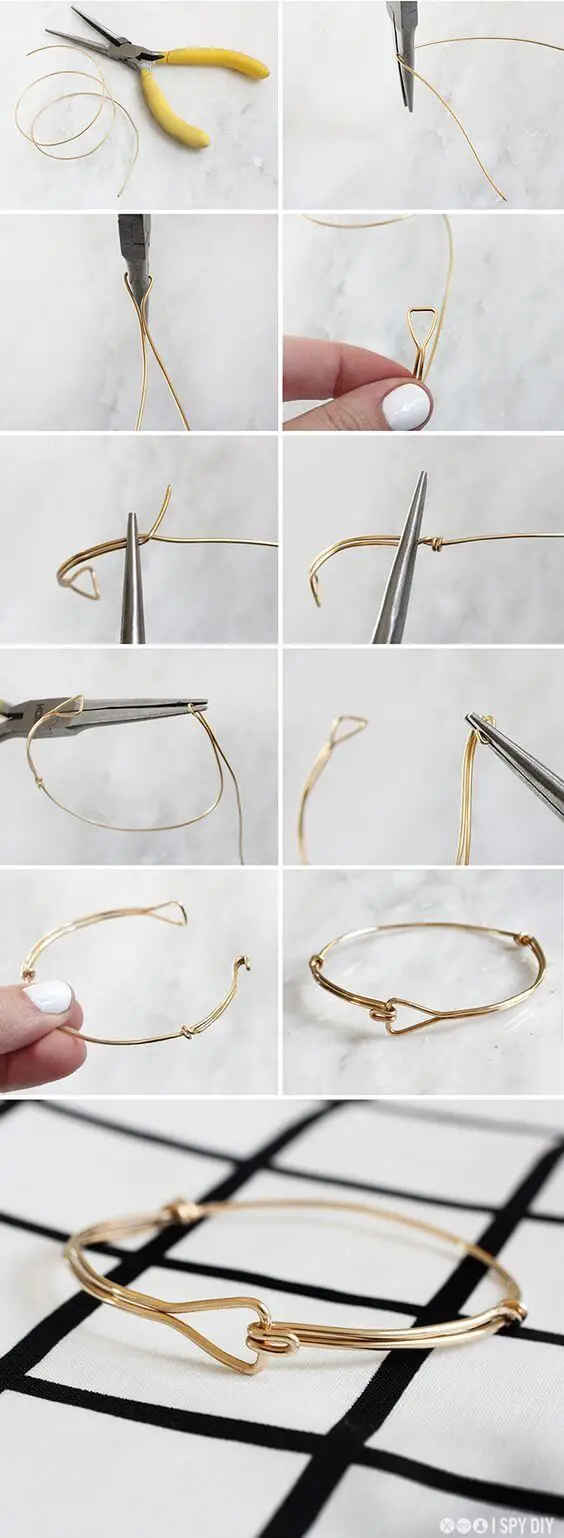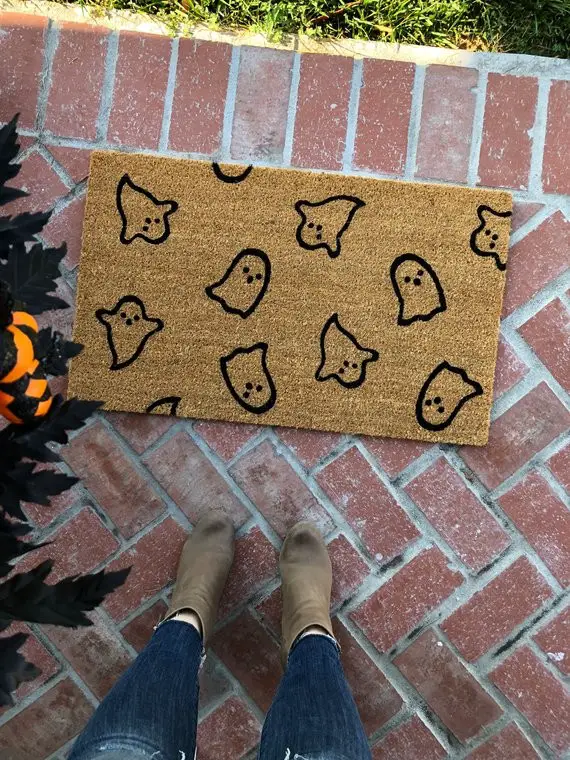15 Stunning Plants To Pair With Hydrangeas For A Gorgeous Garden
When it comes to making your hydrangeas truly stand out, companion planting can be a game-changer. This simple yet effective strategy involves pairing hydrangeas with other plants that not only complement their beauty but also promote healthy growth and pest resistance. By choosing the right companions, you can create a vibrant and thriving garden that’s teeming with life.
In this article, we’ll explore the best plants to pair with hydrangeas, from shade-loving groundcovers to colorful bloomers, and discuss key considerations for creating a harmonious and beautiful garden landscape.
Understanding Hydrangeas
Types of Hydrangeas
Hydrangeas boast an impressive array of varieties, each distinguished by its distinctive characteristics. Mophead hydrangeas are renowned for their show-stopping, spherical blooms that resemble fluffy pom-poms. Lacecap hydrangeas, on the other hand, feature flat, delicate flowers with tiny centers and larger petals radiating outward, imparting a lacy texture to the overall appearance.
Panicle hydrangeas, meanwhile, take center stage with their unique, cone-shaped blooms that undergo a striking color transformation as they mature, offering a visually dynamic display throughout the growing season.
Growing Conditions
To successfully cultivate thriving hydrangea plants, it’s essential to understand their specific growing requirements. A well-draining soil rich in organic matter is ideal for these plants, which also prefer partial shade but can tolerate some morning sunlight. Consistent moisture levels are crucial, with the soil remaining consistently moist without becoming waterlogged.
While hydrangeas can be somewhat resilient to neglect, they do not perform well in extreme conditions such as harsh afternoon sun and dry spots. By providing the right environment, you’ll be rewarded with healthy, vibrant hydrangea plants.
Bloom Times and Color Variations
One of the most delightful aspects of cultivating hydrangeas is the kaleidoscope of bloom times and colors they present. With some varieties blooming from late spring to early autumn, the anticipation of watching these stunning flowers unfold can be thrilling. Moreover, the color palette of hydrangea blooms is significantly influenced by soil pH – acidic soils tend to produce blue hues, while alkaline soils yield pink tones.
Some exceptional varieties even boast multi-colored blooms, which can create a breathtaking display in your garden as the seasons transition.
Best Companion Plants for Hydrangeas
Shade-Loving Plants
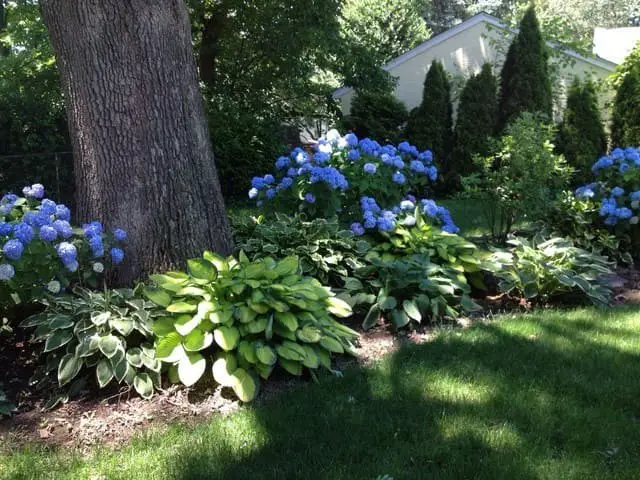
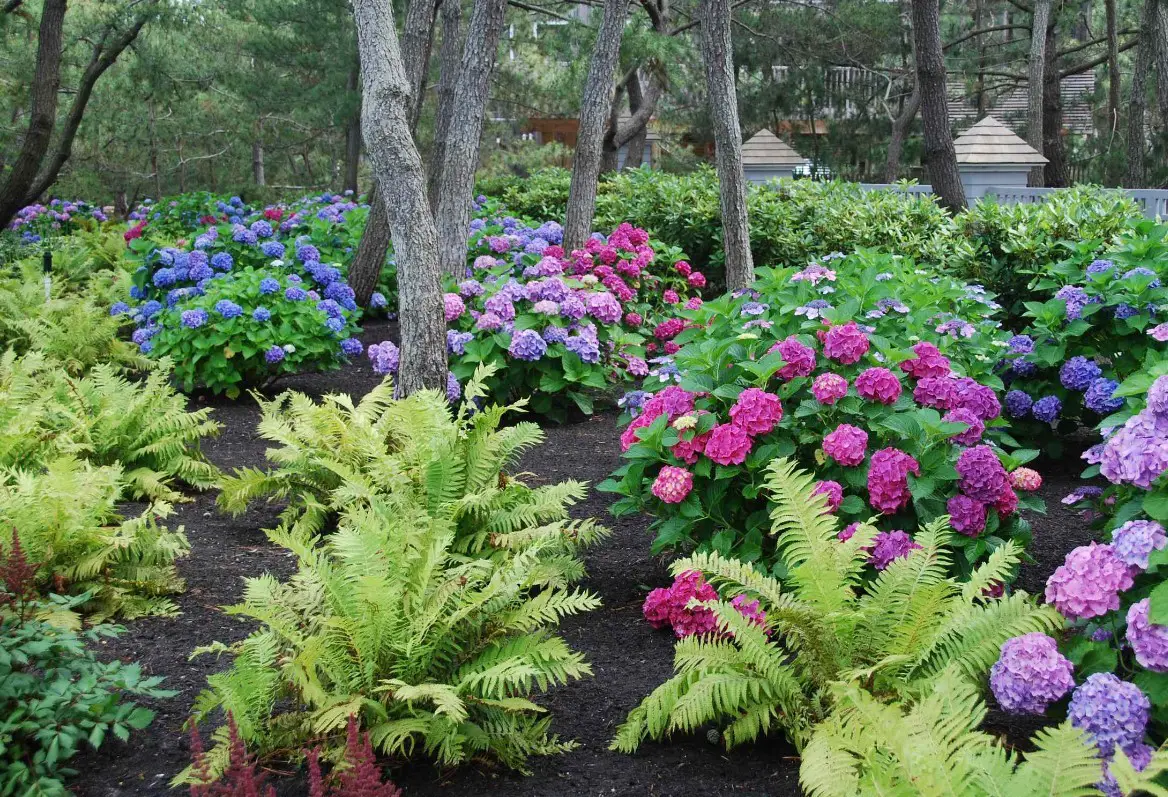
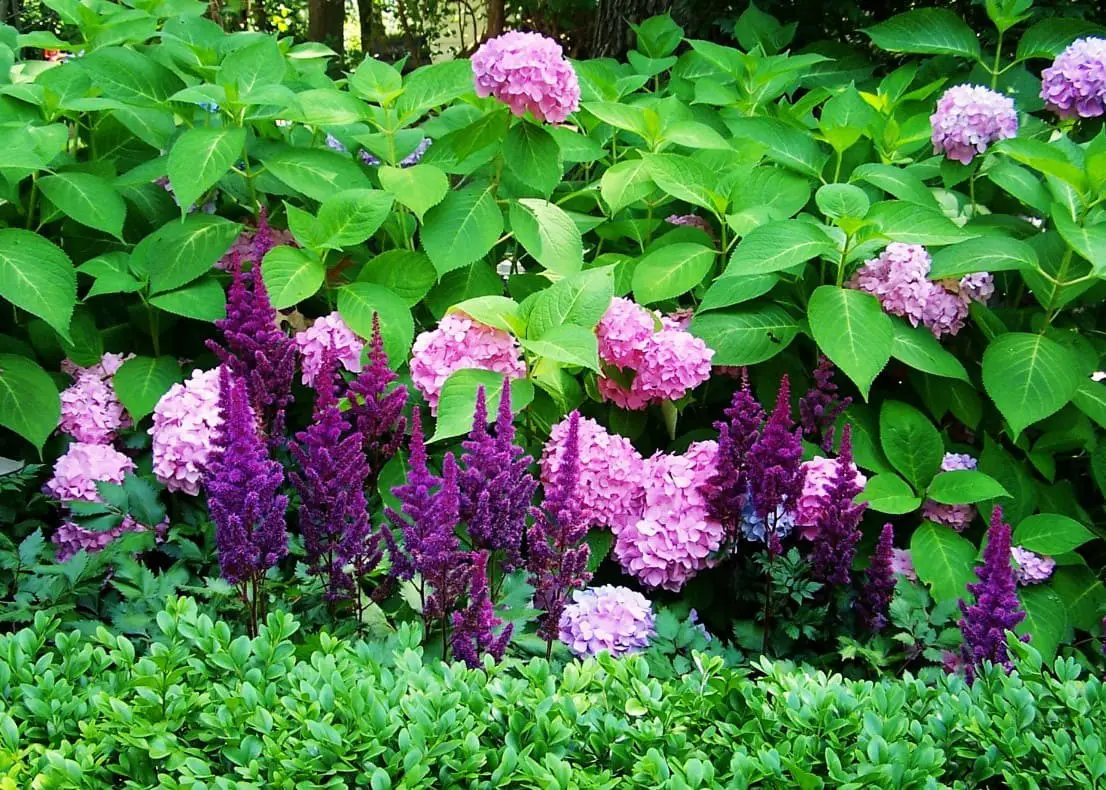
When it comes to pairing plants with hydrangeas, there are several options that can complement their delicate flowers nicely. One great choice is hostas, whose broad leaves provide a striking contrast to the hydrangea blooms. The fact that both plants thrive in partial shade makes them a perfect match. Another option is ferns, which add an airy texture to your garden with their feathery fronds.
Both plants enjoy moist, well-drained soil and can create a beautiful backdrop for the vibrant blooms of hydrangeas. For a pop of color, consider planting astilbes alongside your hydrangeas. Their plume-like flowers burst forth in shades of pink, red, or white, and they also prefer shady, moist conditions. The combination of these two plants can result in a lush, colorful display that’s sure to be the envy of your neighbors.
Ground Covers
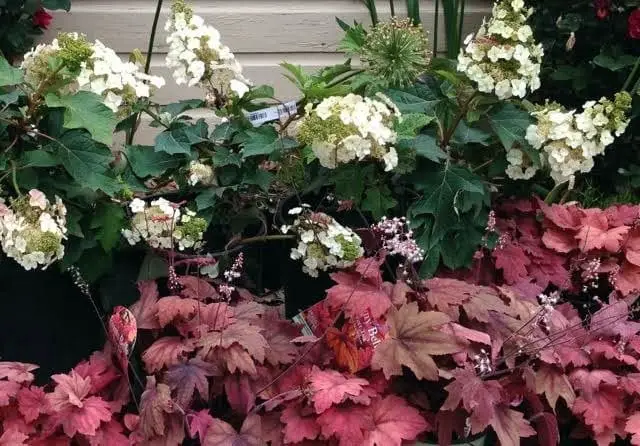
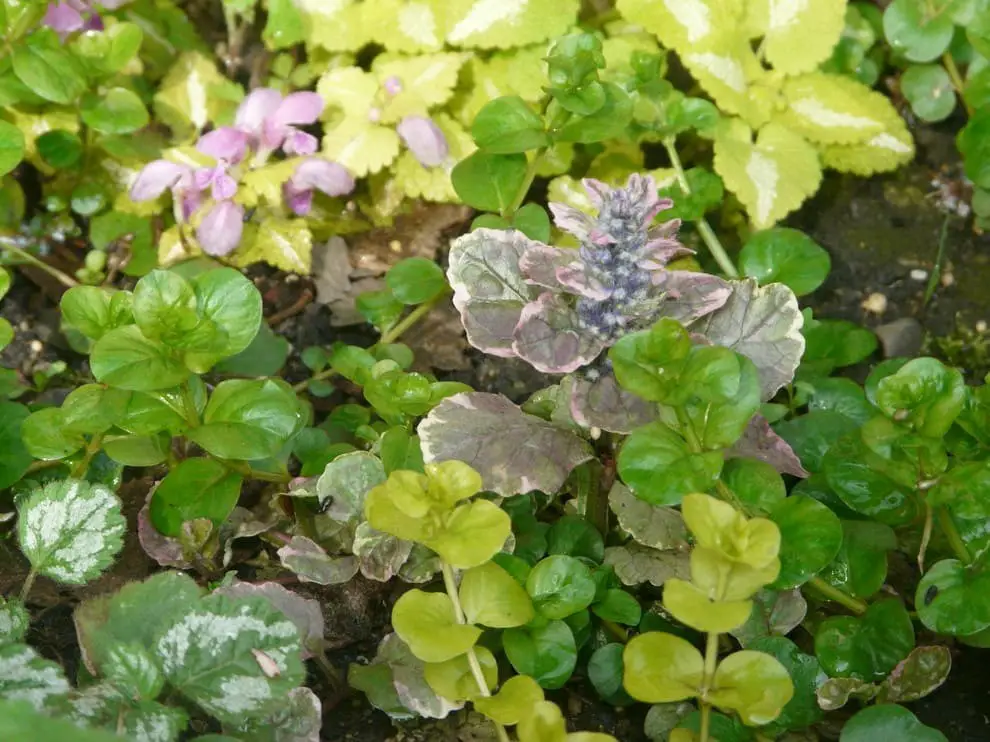
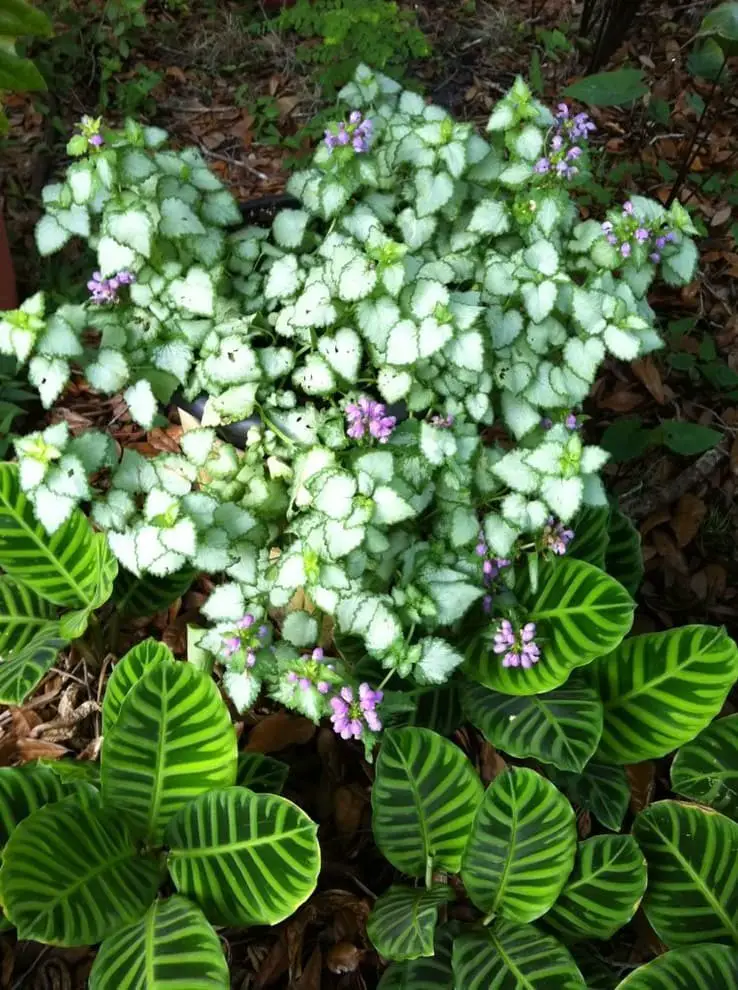
When it comes to adding a pop of color or texture beneath your hydrangea plants, Heucheras (Coral Bells) are an excellent choice. Their vibrant leaves can create visual interest even when the hydrangeas aren’t in bloom. These ground covers thrive in partial shade and well-drained soil, making them a perfect companion for hydrangeas.
Another option is Creeping Jenny, a vigorous ground cover that not only suppresses weeds but also adds a striking contrast with its bright green or golden leaves against the hydrangea flowers. This plant thrives in moist conditions, just like hydrangeas. For areas with dappled shade, Lamium is another excellent choice. Its silver-tinged leaves and small flowers can create an attractive carpet of foliage that brightens up the space beneath your hydrangeas.
Ornamental Grasses
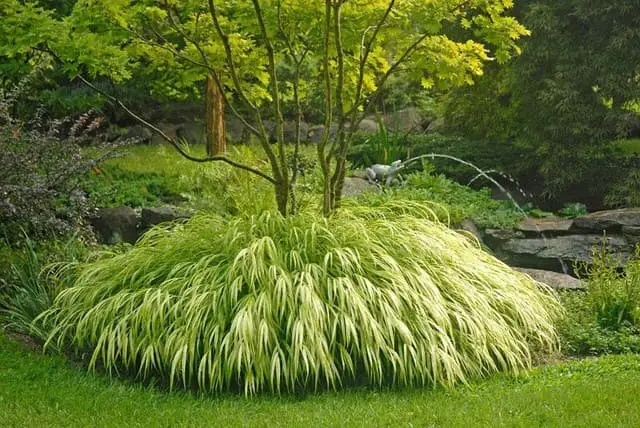

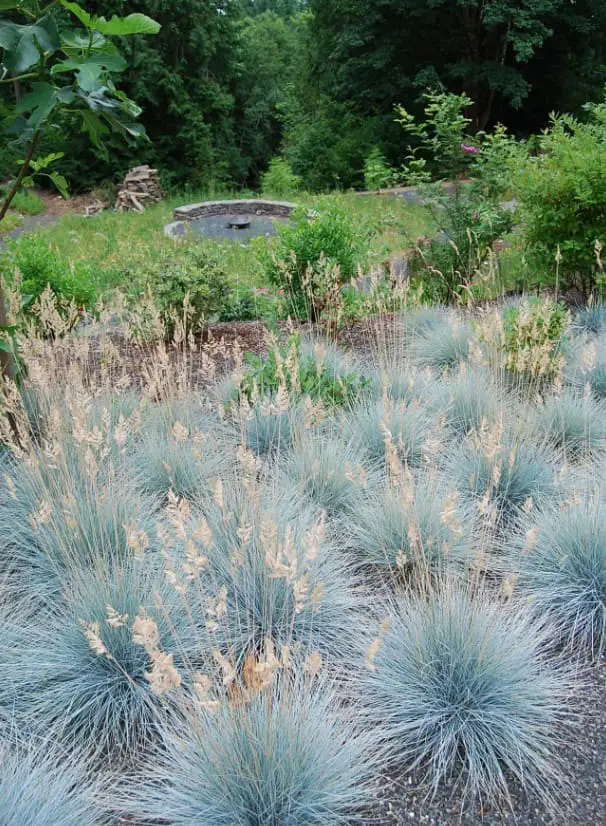
Hakonechloa, also known as Japanese Forest Grass, brings a touch of elegance to any garden with its flowing, arching leaves that shimmer in shades of golden green. This versatile grass can be paired with hydrangeas to create a striking contrast, particularly when planting in shaded areas where the hydrangea’s blooms take center stage. Its delicate texture and mellow hue allow it to blend harmoniously with its surroundings.
Carex, or Sedge, offers a range of textures and colors that make it an excellent choice for complementing hydrangeas. This hardy grass can thrive in both wet and dry conditions, making it suitable for planting alongside hydrangeas. Its fine foliage provides a nice contrast to the bold blooms of hydrangea, adding depth and visual interest to the garden. Festuca, also known as Fescue, is a low-maintenance option that can add a soft, wispy texture to your garden.
Its blue-green foliage complements the colors of hydrangea flowers, creating a harmonious garden scene. This grass is easy to care for and requires minimal upkeep, making it an excellent choice for busy gardeners or those new to gardening.
Fragrant Plants
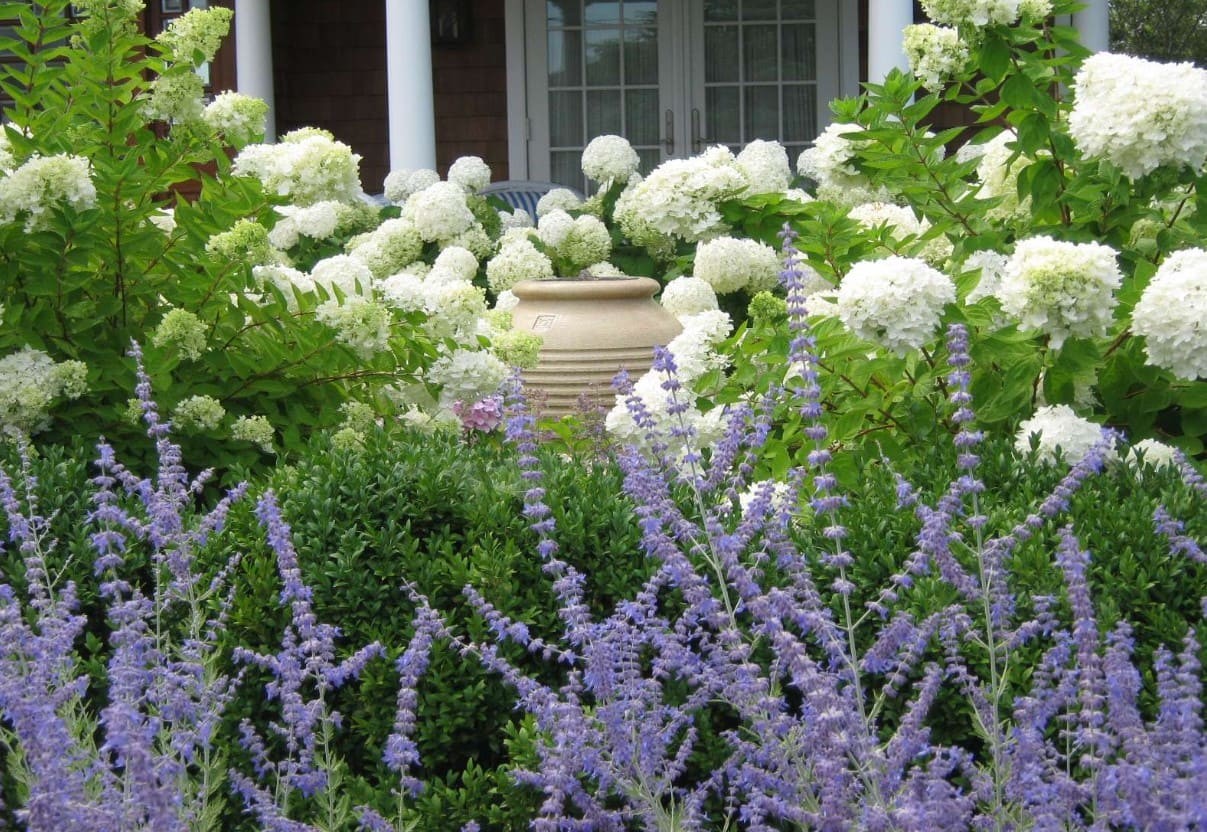
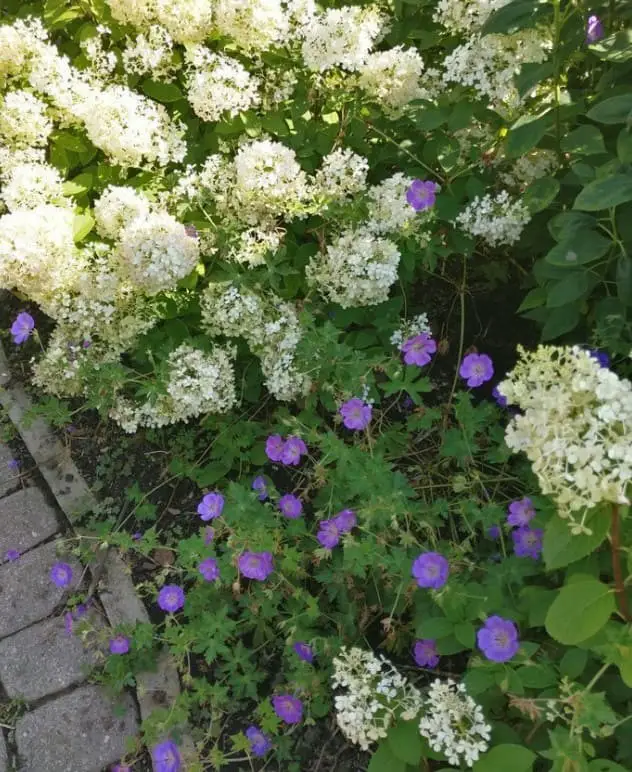
When it comes to creating a harmonious garden setting with hydrangeas, certain flowers can add a delightful dimension of fragrance and color. Lavender, with its purple blooms and sweet aroma, can create a lovely contrast with the soft hues of hydrangea flowers when grown in full sun or partial shade near these plants. Gardenias are another excellent choice, as their strong, sweet fragrance complements the soft petals of hydrangeas, while also enjoying similar soil and light conditions.
For added visual interest, Dianthus (Pinks) offer spicy, clove-like scents and low-growing habits that can complement hydrangeas nicely, preferring well-drained soil and partial shade. These flowers not only bring a sensory experience to your garden but also create a visually appealing combination with hydrangeas.
Considerations for Companion Planting
Matching Soil pH Requirements
When planning companion planting for a harmonious garden, it’s essential to consider the specific soil pH requirements of each plant. Hydrangeas, in particular, flourish in acidic to neutral soils, boasting a pH range of 5.5 to 6.5. To foster a thriving environment for these plants, pair them with companions like azaleas or rhododendrons that share similar acidic soil preferences.
If your native soil lacks the desired acidity, you can utilize peat moss or sulfur as amendments to maintain the ideal pH levels.
Sunlight and Water Compatibility
When cultivating a vibrant garden, it’s crucial to consider the companions of your plants. Hydrangeas, for instance, thrive in partial shade and consistent moisture. By pairing them with plants that share similar preferences, such as hostas and ferns, which also flourish in shaded conditions and regular watering, you’ll create an harmonious balance.
On the other hand, it’s essential to avoid planting companions that require full sun or dry conditions, as they may struggle to coexist with hydrangeas. By taking these factors into account, you’ll be able to create a thriving garden where all plants can thrive.
Seasonal Interest and Bloom Times
To maintain a vibrant and dynamic garden throughout the year, it’s essential to consider the seasonal interest and bloom times of your plants. By incorporating a diverse range of species that flourish at different periods, you can create a visually appealing landscape that never fails to impress.
For instance, hydrangeas are known for their impressive blooms in late spring to early autumn, while early risers like columbines or late-blooming perennials such as daylilies can add a pop of color and texture to your garden’s visual display. This strategic approach ensures that there is always something new and exciting to behold, making your outdoor space a true showstopper.
Growth Habits and Space Requirements
To cultivate a harmonious and thriving garden, it’s essential to comprehend the growth habits and spatial needs of your plants. For instance, hydrangeas are known to spread quite extensively, necessitating ample space for them to unfurl. A clever approach is to intersperse low-growing ground covers such as creeping Jenny or compact grasses like festuca among these larger specimens.
This layered effect not only adds visual interest but also ensures that the plants do not compete for resources and space. When planning your garden, always consider the mature size of each plant to maintain a sense of balance and harmony.
Designing Your Garden with Hydrangeas and Companions
Tips for Arranging Plants for Maximum Impact
Transforming your garden into a visually stunning display is achievable by carefully arranging your plants. Begin by considering the height and color of each plant, taking note of their unique characteristics. Place taller specimens like hydrangeas at the back or center of your garden beds, with shorter companions such as hostas and ferns in front. This layered approach creates depth and visual interest, drawing the viewer’s eye through the arrangement.
Furthermore, thoughtfully mixing and matching colors can elevate the overall beauty of your garden, resulting in a captivating display that showcases your green thumb.
Creating Focal Points and Layers
To create visual appeal in your garden, establish focal points by combining bold plants with complementary companions. Hydrangeas, for instance, can be the main attractions when surrounded by plants like azaleas and rhododendrons that burst with color or ornamental grasses like hakonechloa that add soft texture. This layered approach not only enhances aesthetics but also ensures your garden maintains interest throughout the year.
Using Containers and Borders Effectively
When it comes to garden design, containers and borders can be game-changers. Containers offer the flexibility to rearrange plants as needed, adding visual interest with varying heights. They’re ideal for showcasing plants like lavender and gardenias, which can be strategically placed to amplify their fragrance and aesthetic appeal. Borders, on the other hand, serve as a defining feature that creates a sense of structure and order in your outdoor space.
By incorporating low-growing ground covers like creeping Jenny along borders, you can create a lush, continuous edge that harmoniously complements taller plants in your garden beds.
Conclusion
When it comes to planting hydrangeas, having the right companions can be the key to unlocking a garden’s full potential. By taking into account the unique needs of your plants, including soil pH, sunlight, water, and seasonal interest, you can create a thriving oasis that’s both visually stunning and easy to maintain. It’s not just about the individual plants themselves, but also how they work together to create a harmonious balance.
This involves thoughtful arrangement, creating focal points, and using containers and borders effectively to maximize visual impact. By embracing these strategies, you’ll be rewarded with a garden that’s truly gorgeous, healthy, and hassle-free.

